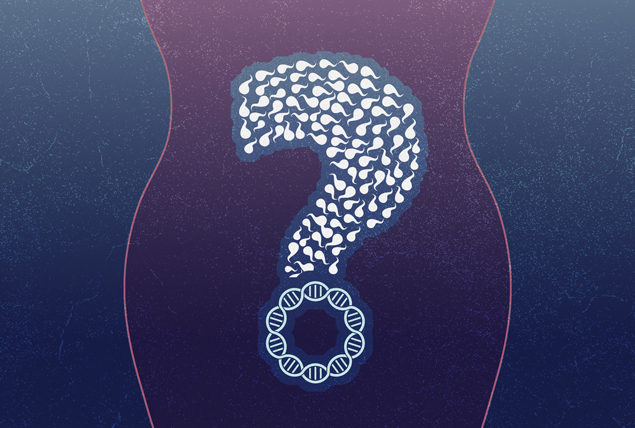DNA is a complex molecule that houses the genetic code essential to all living things. During a sexual encounter, a male’s sperm may reach a woman’s body and fertilize her egg. As the outcome, a pregnancy develops, and the resulting embryo has DNA from the two parents. But if there is no fertilization, what happens to the man’s DNA? For what length of time does it remain within the woman’s body? Let’s investigate this intriguing subject.
How Long Do You Carry a Man’s DNA After Pregnancy?
In the event that a pregnancy does develop, the infant inherits the man’s DNA permanently. Certain infant cells can cross across and enter the bloodstream of their mothers even after delivery. This is called microchimerism, leaving the woman with some fetal DNA for the rest of her life.
Fetal cells also pass through the membrane of the placenta and reach the womb during pregnancy. Male fetal cells have been found in women’s blood up to 27 years after delivering a son. Thus, a lady may retain her baby’s father’s DNA for several decades following childbirth.
Do You Carry Your Baby Daddy DNA for 7 Years?
According to an urban legend, a woman is said to have DNA from every male she has been with for up to seven years. This misconception probably started because genital epithelial cells have an average turnover period of seven years. Nevertheless, the theory that every man’s DNA becomes permanently integrated into the epithelium is unsupported by scientific data.
There is no definitive period of time for which DNA from the partner who did not initiate a pregnancy would persist, even though women do maintain some DNA from their conceptions for a long time. Sperm only have a few days to live inside the female reproductive system. Naturally occurring cell shedding and the body’s immune system quickly removes most remaining DNA.
Can Sperm Alter a Woman’s DNA?
The idea that sperm can actually change or modify a woman’s genes and genetic makeup is incorrect. Our chromosomes’ DNA doesn’t alter during the course of our lifetimes. Microchimerism allows for the long-term accumulation of male DNA throughout pregnancy.
Samples from mucus in the cervical cavity is taken up to several days following sexual activity have also included trace levels of male DNA. However, rather than being the result of a mutation in the genome or recombination event, this is only a residual sign of male cells. The DNAs of the male and female just cohabit in different ways.
Does the Body Retain DNA from Sperm?
Studies indicate that the body does hold onto some male sperm DNA for a while. Male DNA has been found during autopsies in the blood, liver, heart, and brain of women who gave birth to sons. Up to ten days following unprotected sex, female cervical biopsies have also revealed the presence of male DNA.
In one study, female recipients of bone marrow transplants from male donors were studied. Years later, male DNA likely derived from bone marrow cells was discovered in their cheek swabs and blood. It seems from this that male cells can survive in certain situations.
Still, very little DNA has been found. Pregnancy produces the highest levels by far. There is no proof that sperm spread widely or integrate into female organs on their own. Any uptake is probably limited and goes away fast.
Where Can I Get DNA Testing?
Unlock the Secrets of Your DNA with Our Testing Services

There is testing available if you would like to know if you continue to possess masculine DNA from previous relationships or pregnancies. These are a few choices:
- DNA Testing Lab: Using samples such as blood, or cervical/vaginal cells, labs can do sophisticated forensic-grade DNA testing. Their assays can identify even trace levels of male DNA.
- DNA Test Kit: You can purchase online kits for forensic female swabs designed to capture cervix and uterine cell specimens, which you can then ship back to the laboratory. In two or three weeks, the results are received.
- Prenatal Paternity Tests: Certain tests, such as the Non-Invasive Prenatal Paternity Test, can identify male DNA in an expectant mother’s fetus’s bloodstream. As early as eight weeks, paternity can be determined by this.
It helps ease one’s mind to know if there are still traces of male DNA from previous relationships. Comprehensive DNA testing yields conclusive results through analysis at recognized labs such as Choice DNA.
Conclusion
Pregnancies cause microchimerism, which can endure for decades even though female biology does not keep all male DNA forever. After sexual activity, there may be localized persistence of male DNA traces for a while. However, clearance happens quickly and in minute amounts. If testing is done soon after sexual activity or pregnancy, DNA testing facilities can find even trace amounts of male DNA. To determine whether male DNA is present in females, Choice DNA provides precise forensic-grade testing alternatives.



















